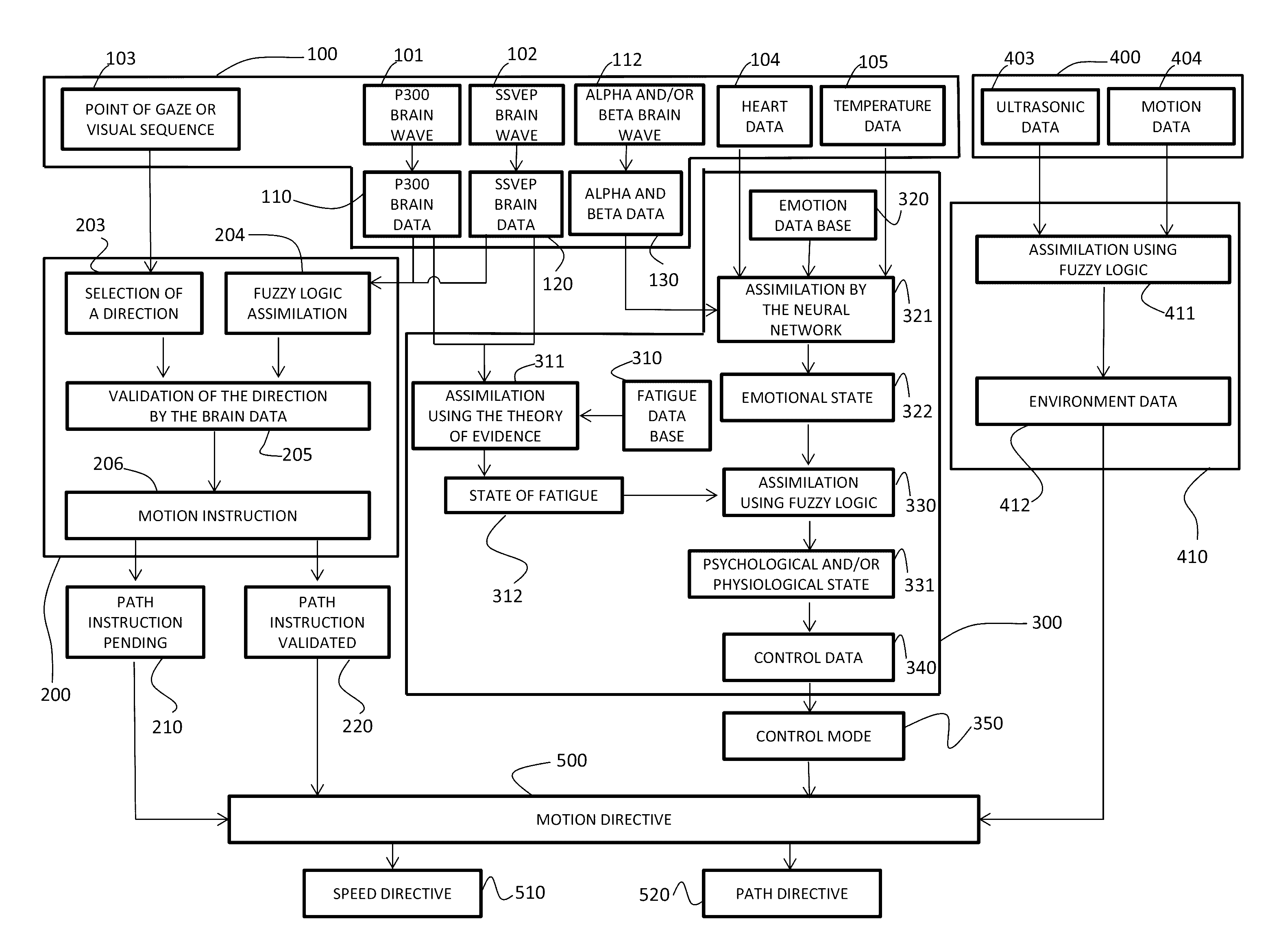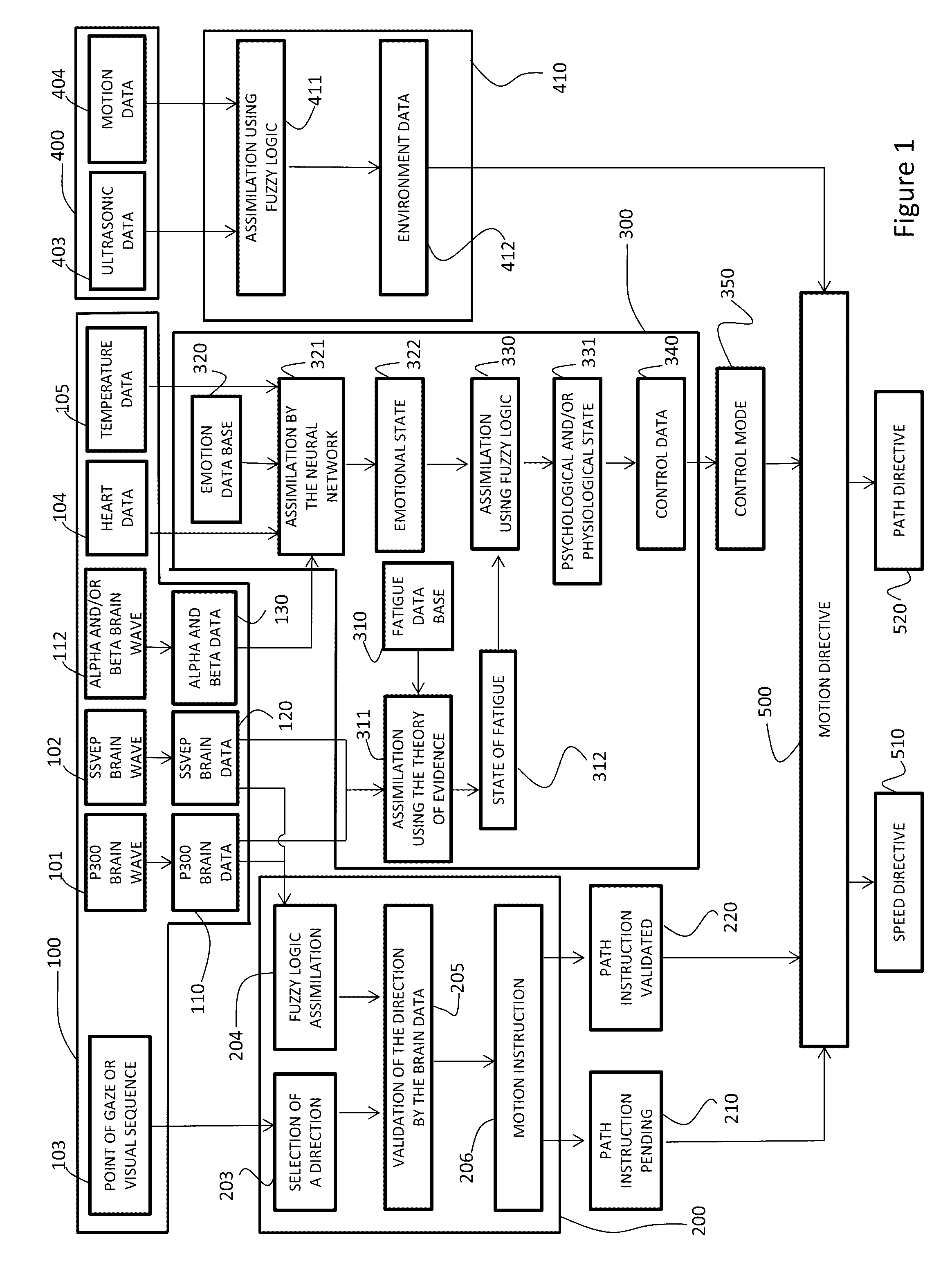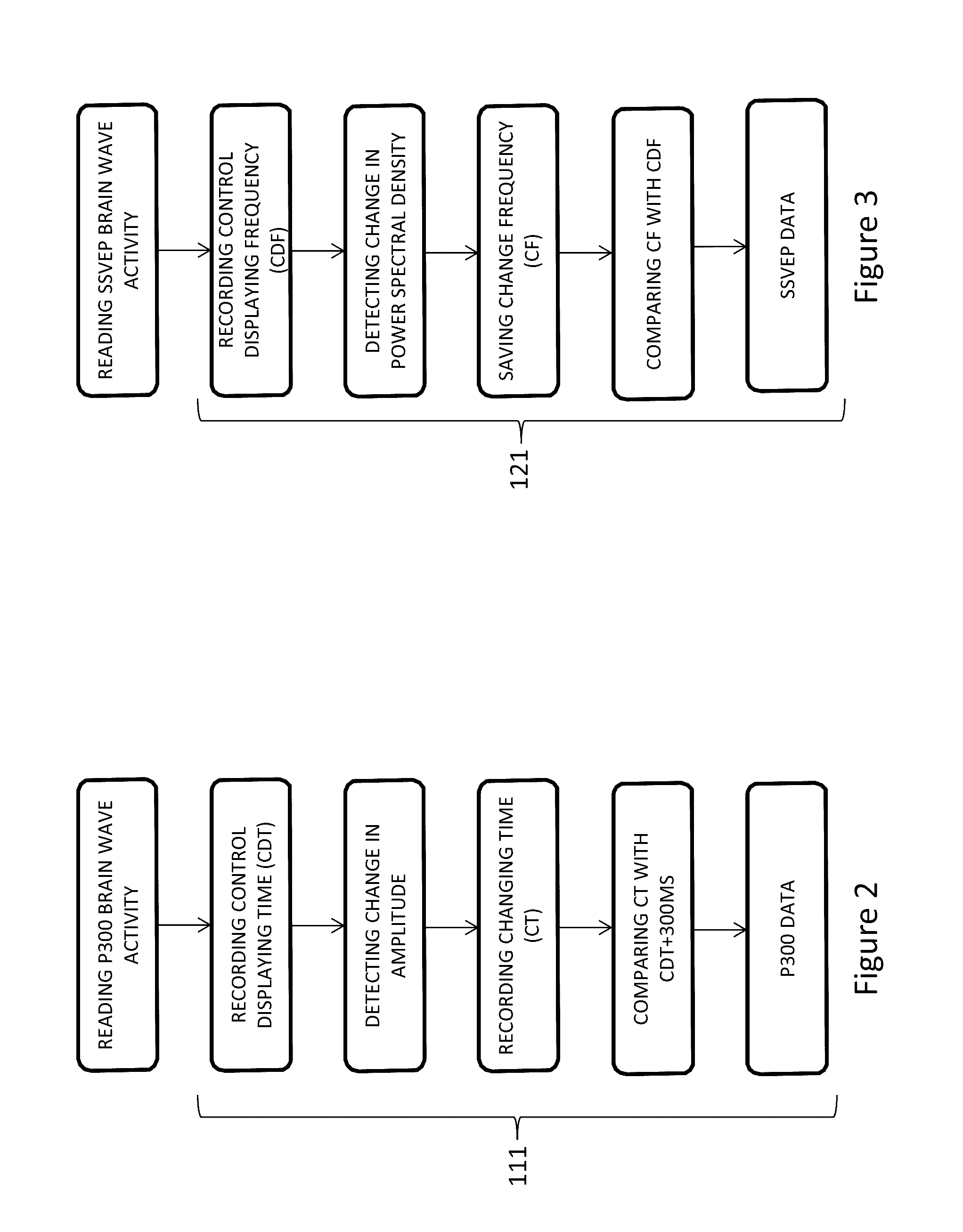Process for controlling a mobile device
a mobile device and control technology, applied in the field of wheelchair control, can solve the problems of visual saccade, difficult and tiring control of a mobile device using visual controls, and the inability of some people to use it, so as to reduce fatigue, enhance user safety, and avoid undesirable motion
- Summary
- Abstract
- Description
- Claims
- Application Information
AI Technical Summary
Benefits of technology
Problems solved by technology
Method used
Image
Examples
Embodiment Construction
[0039]Prior to going into details relating to the preferred embodiments of the invention while referring more particularly to the drawings, other optional characteristics of the invention which may be implemented in any combination or alternately, are mentioned hereafter:[0040]the motion instruction determines a path instruction among at least one or a combination of the following directions: forward, backward, right, left, stop, with the path directive depending on the path instruction too.[0041]said step of generating the motion instruction comprises a validation of the at least one direction selected by the user through the at least one first brain data, so as to determine the path instruction.[0042]the first and / or second brain data originates from a P300 brain wave and comprises a step of generating the first and / or second brain data originating from the P300 brain wave, comprising the following steps:[0043]Reading a user's brain activity while recording the control displaying ...
PUM
 Login to View More
Login to View More Abstract
Description
Claims
Application Information
 Login to View More
Login to View More - R&D
- Intellectual Property
- Life Sciences
- Materials
- Tech Scout
- Unparalleled Data Quality
- Higher Quality Content
- 60% Fewer Hallucinations
Browse by: Latest US Patents, China's latest patents, Technical Efficacy Thesaurus, Application Domain, Technology Topic, Popular Technical Reports.
© 2025 PatSnap. All rights reserved.Legal|Privacy policy|Modern Slavery Act Transparency Statement|Sitemap|About US| Contact US: help@patsnap.com



